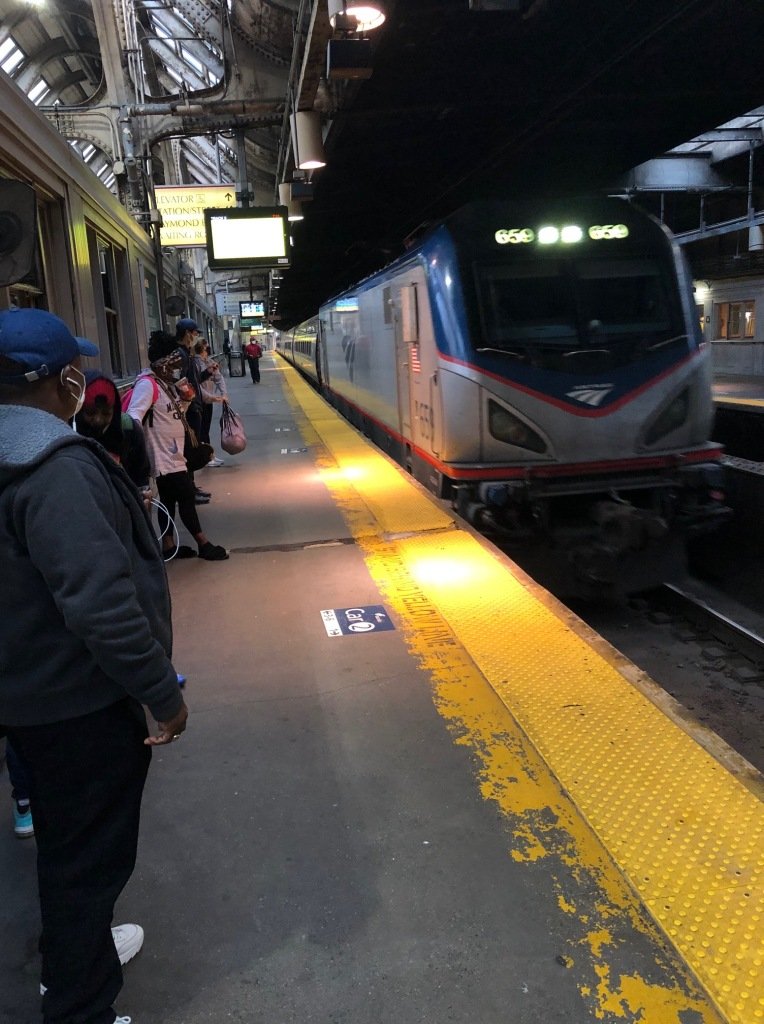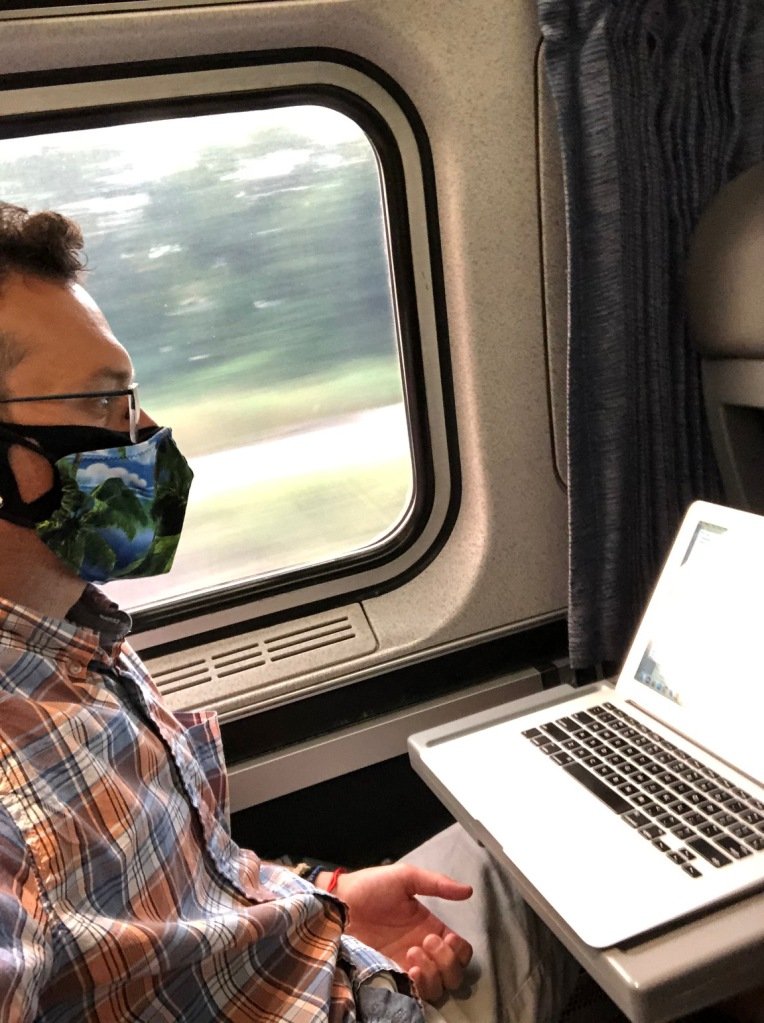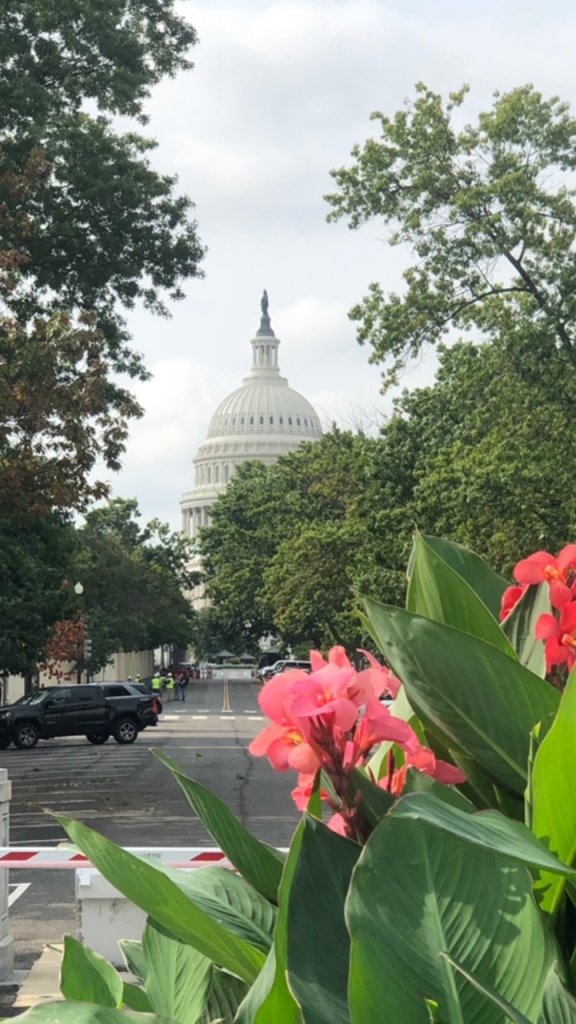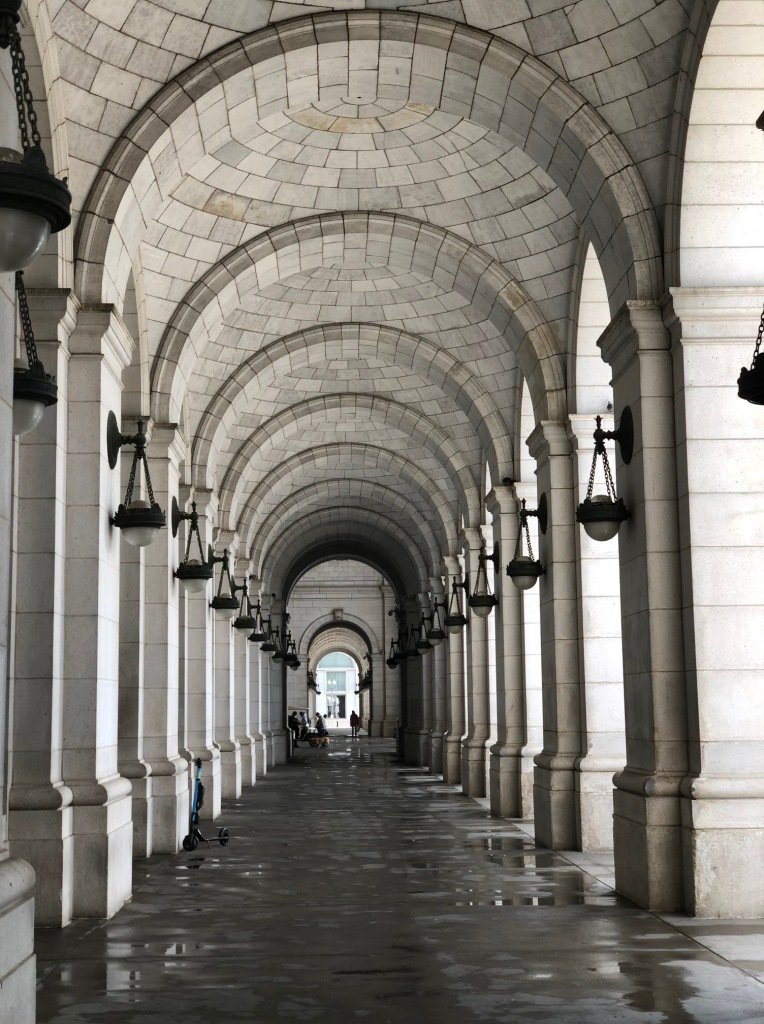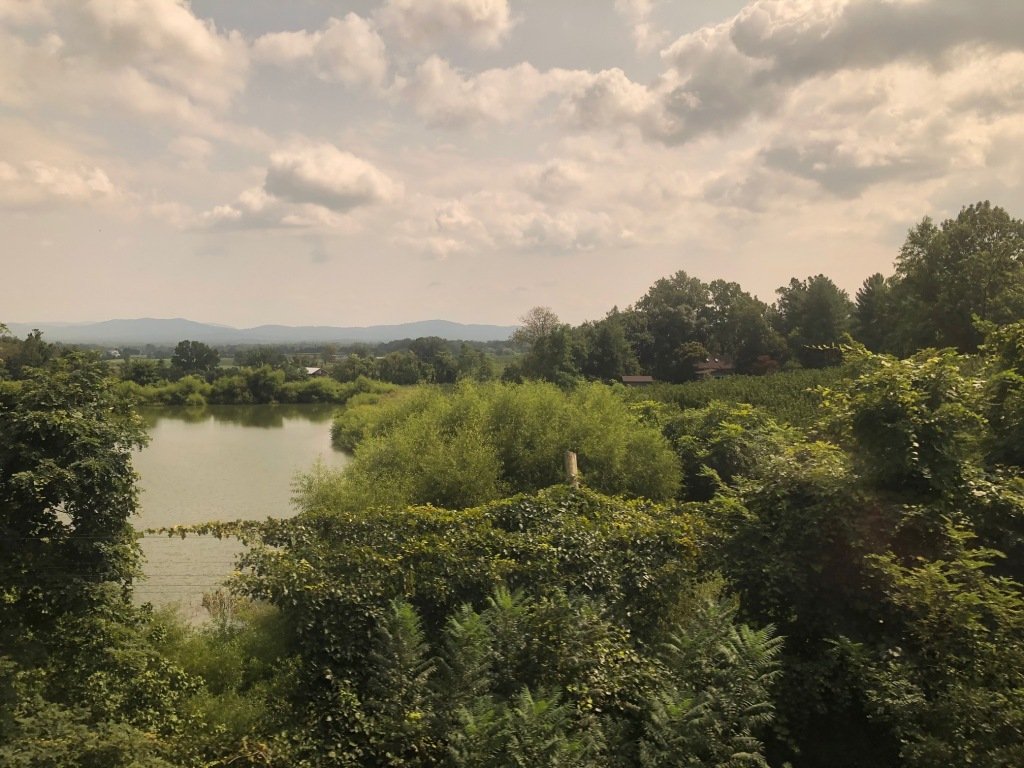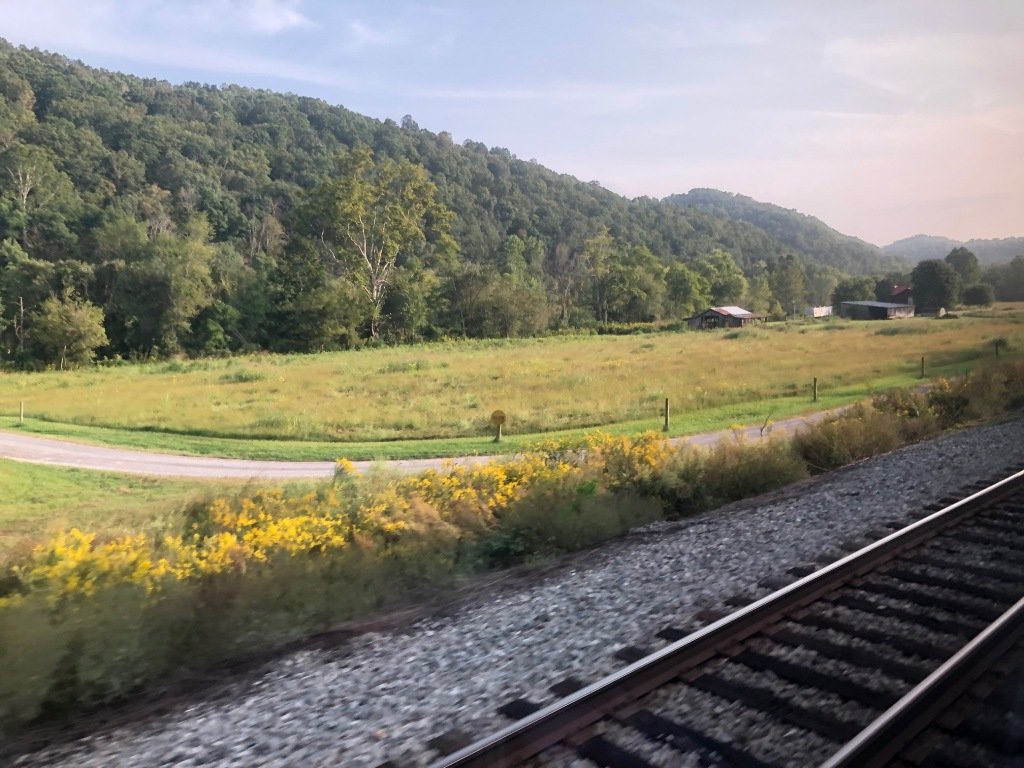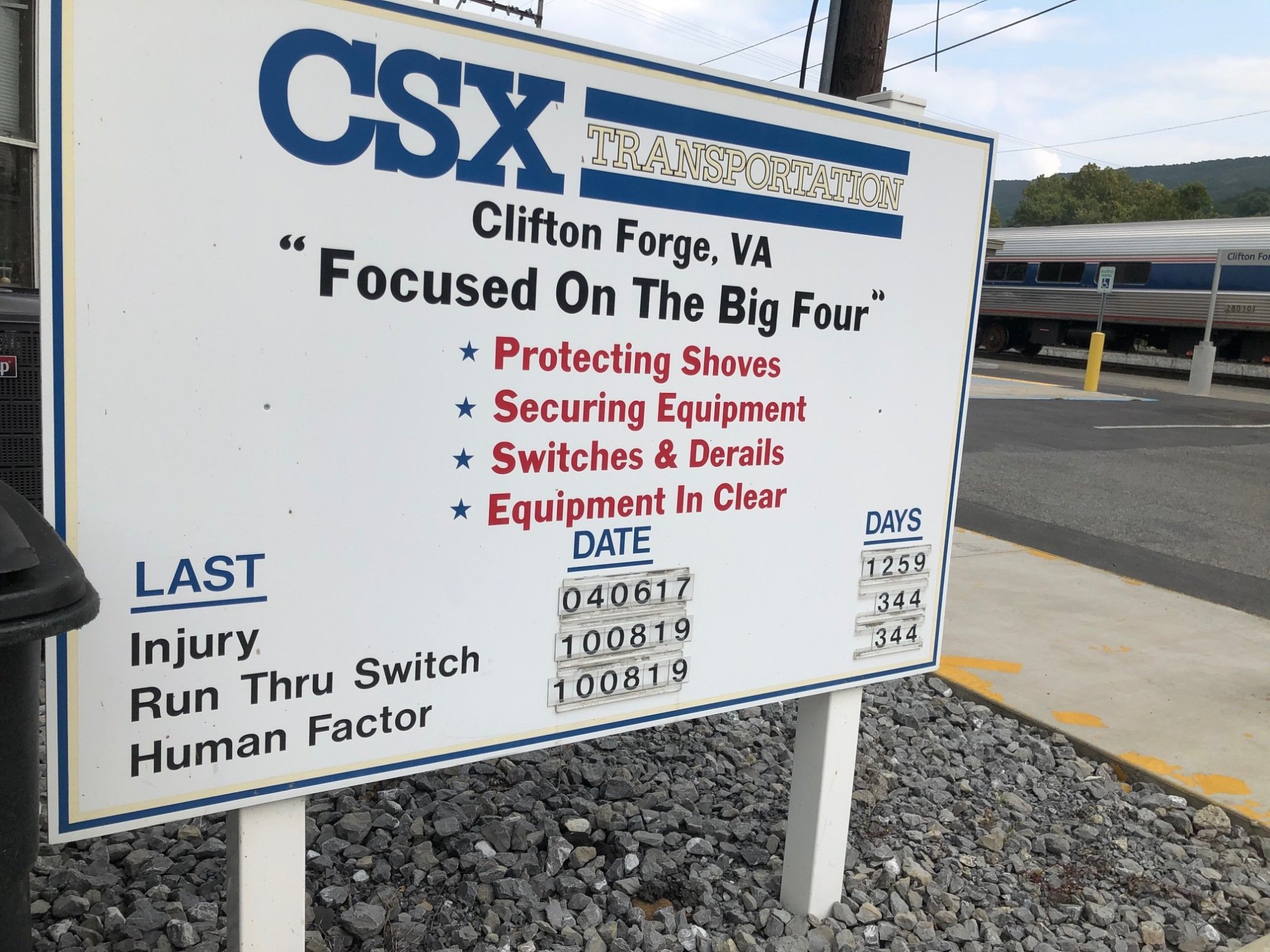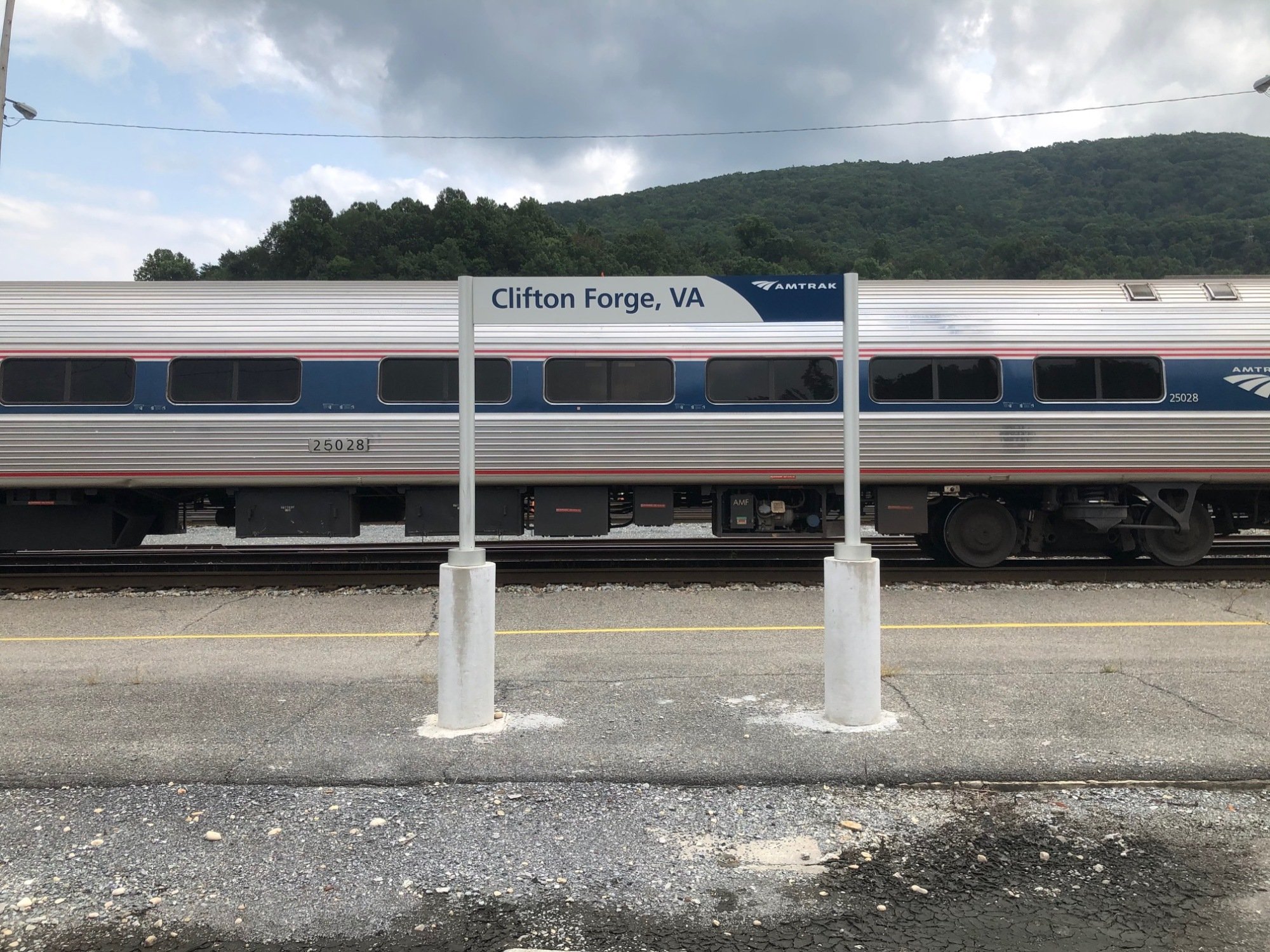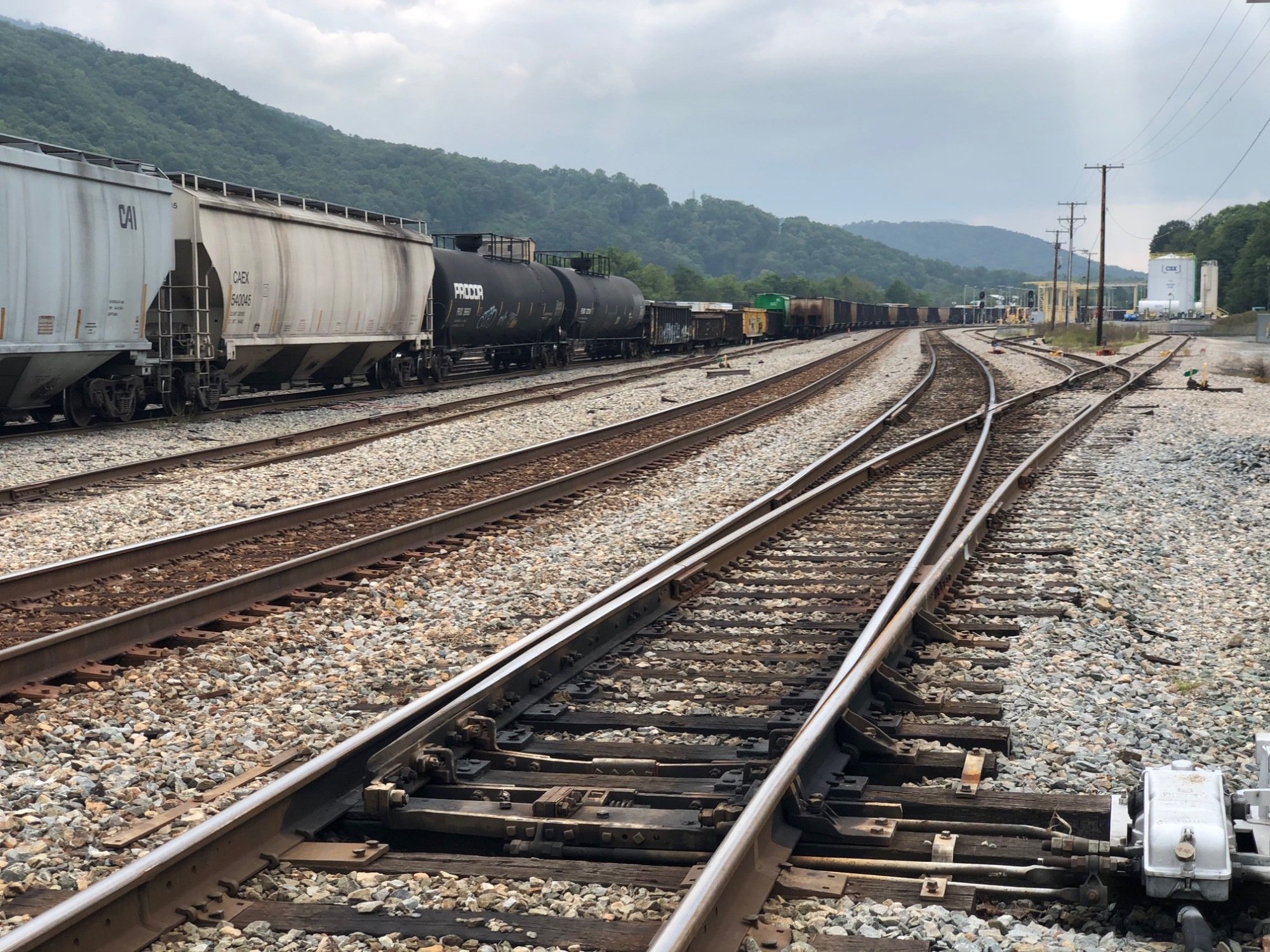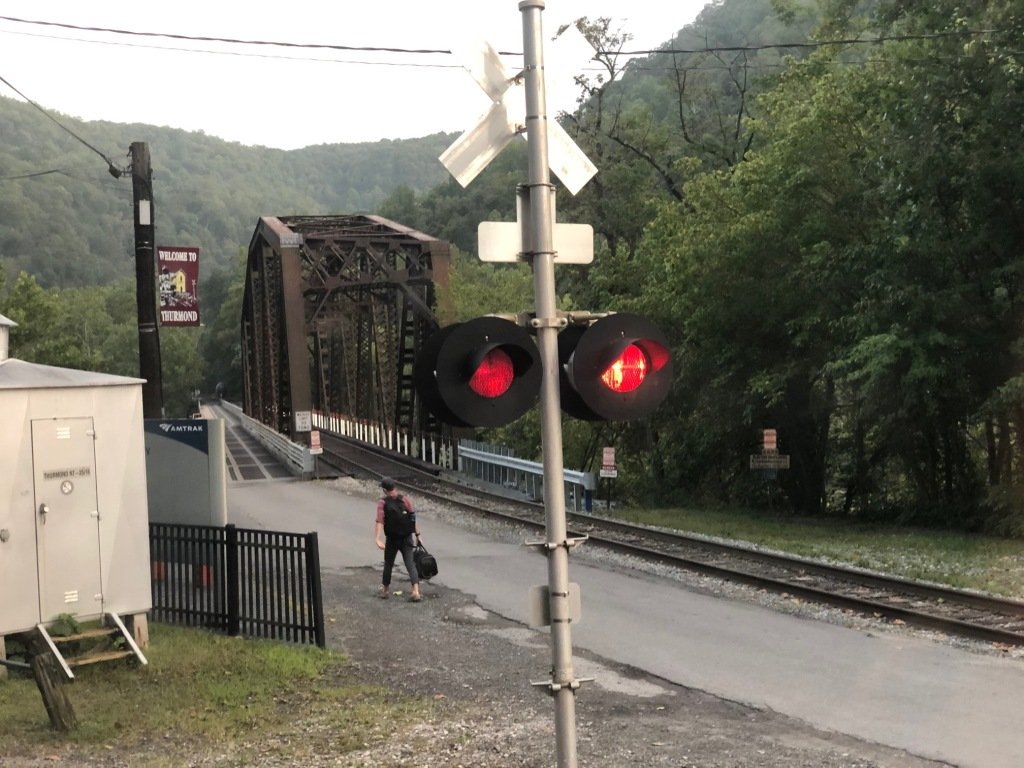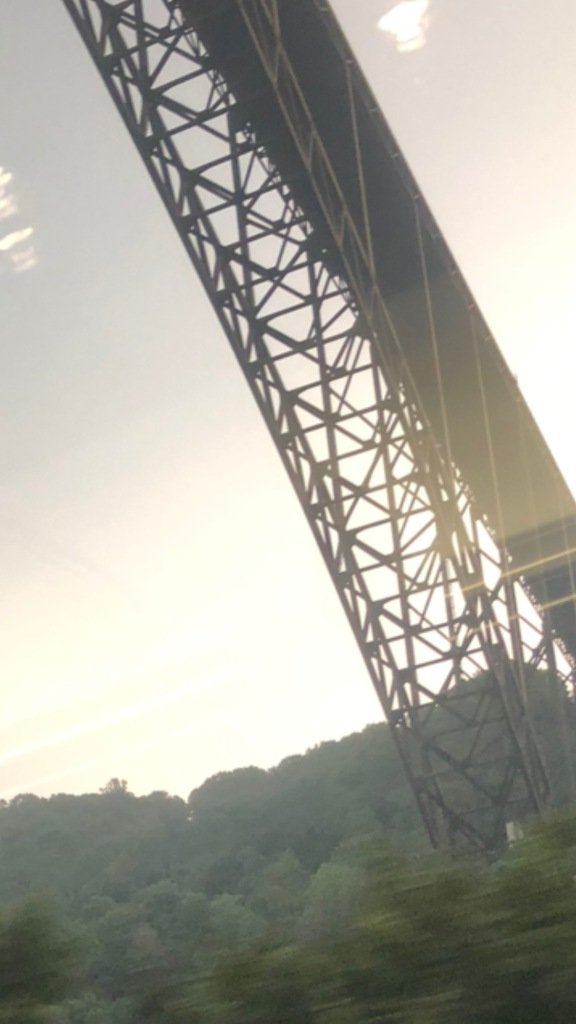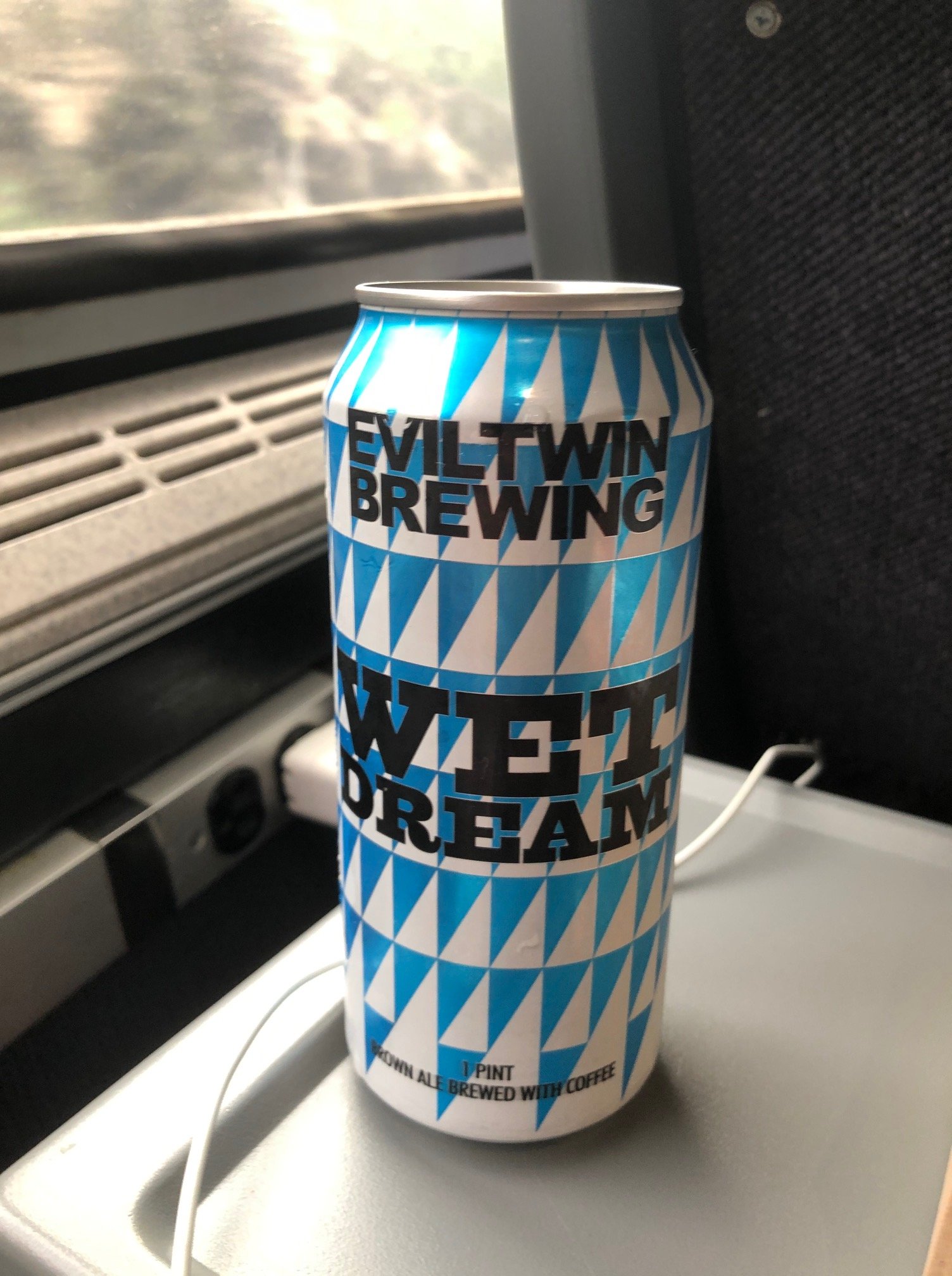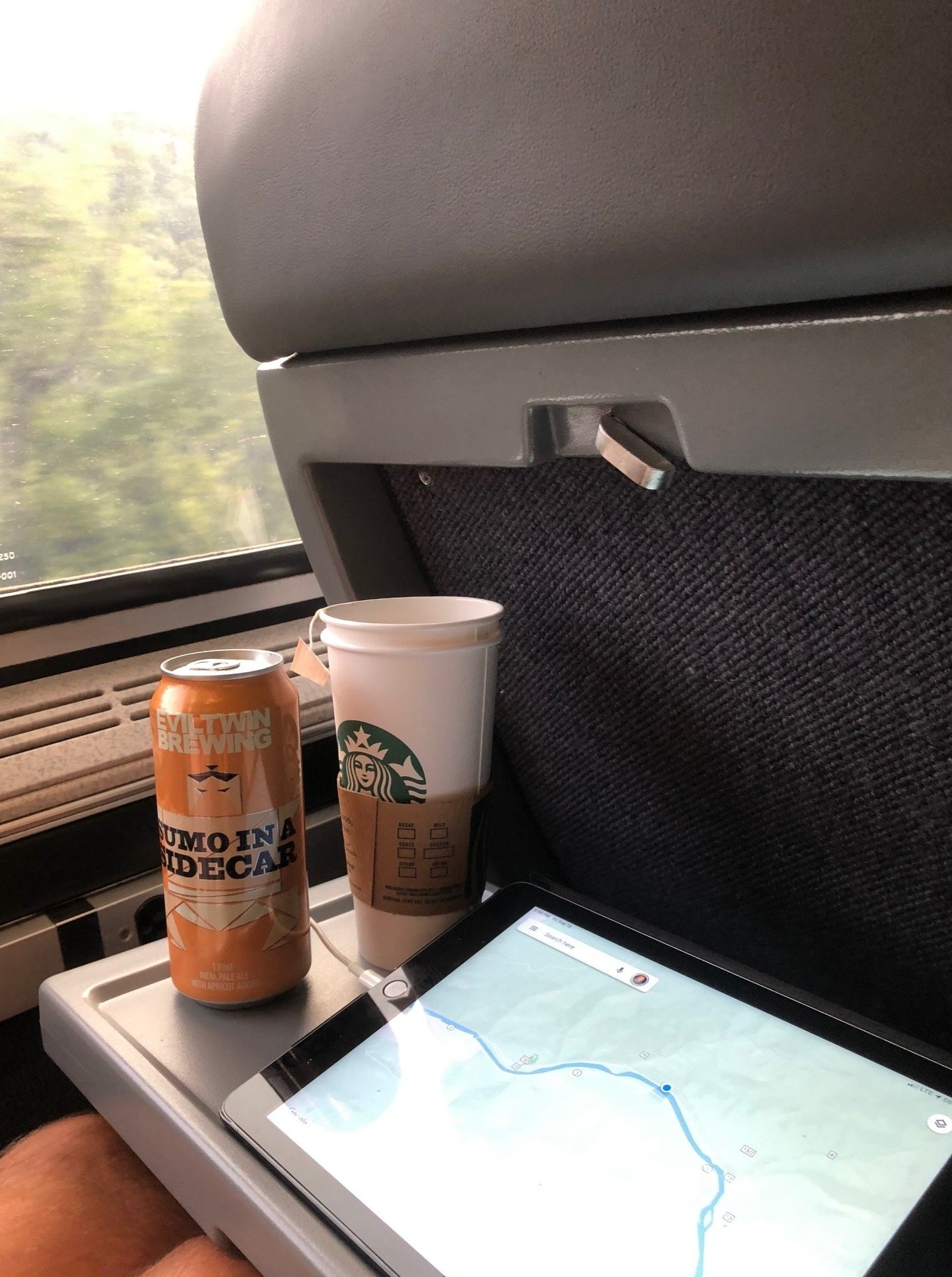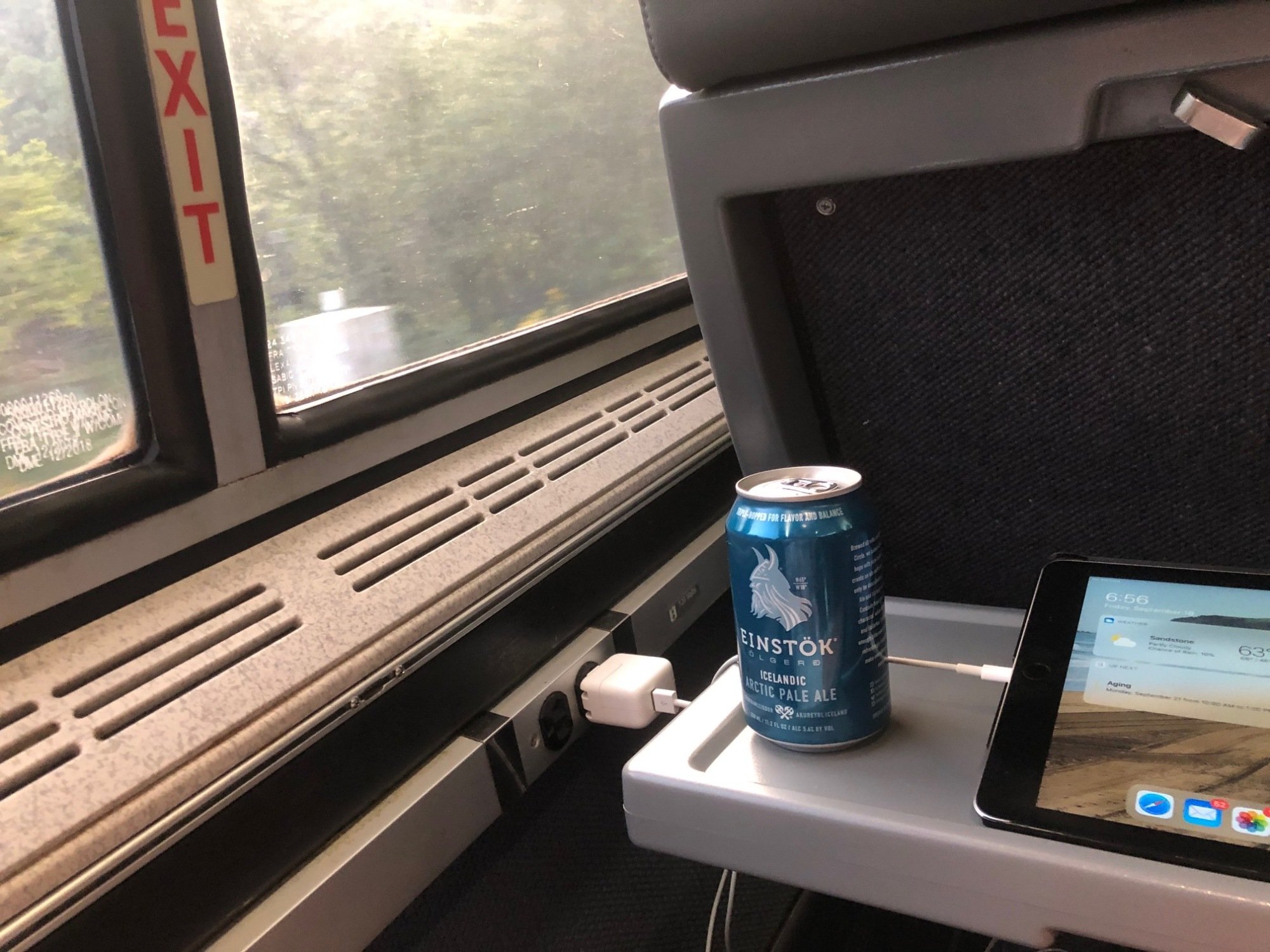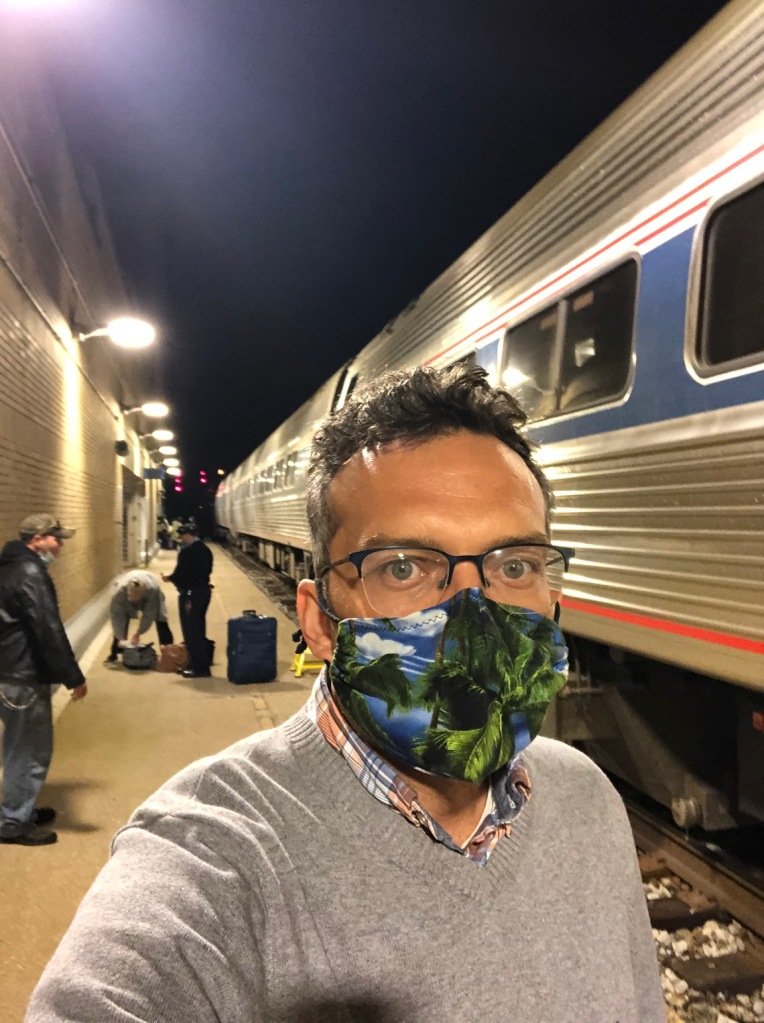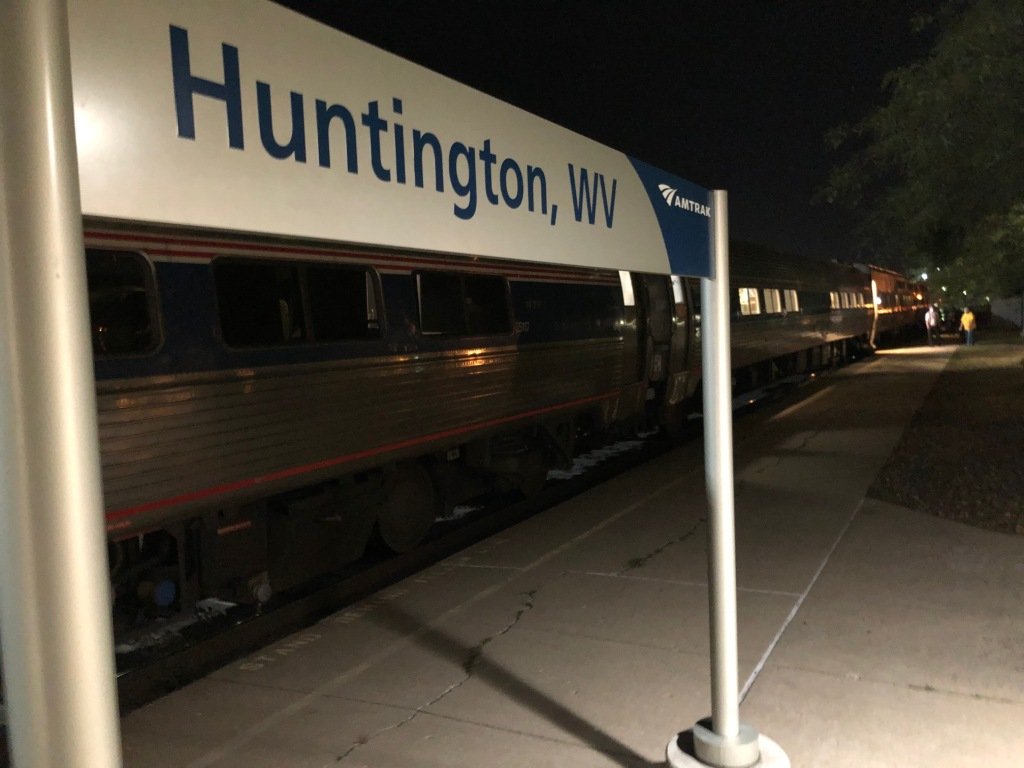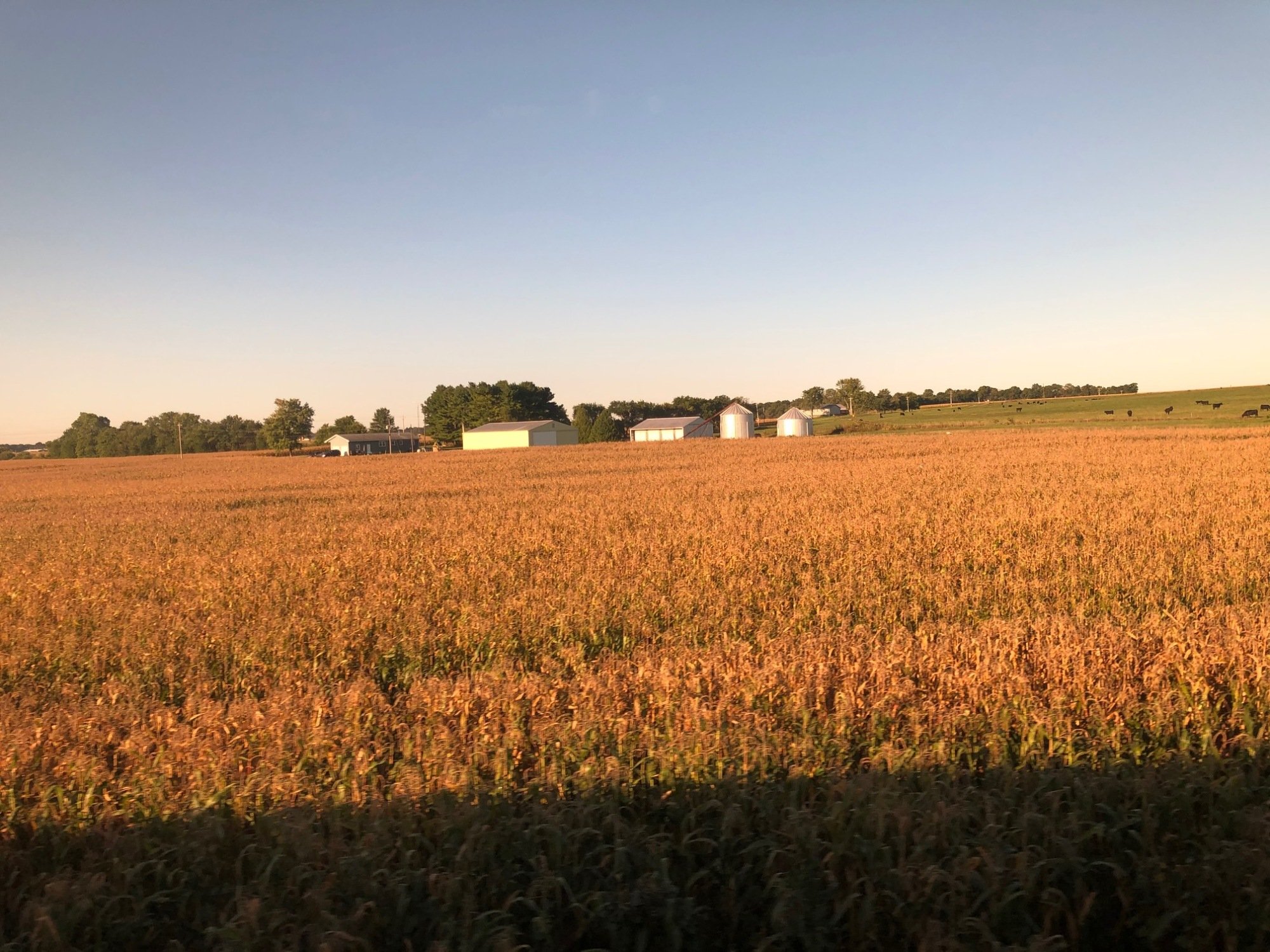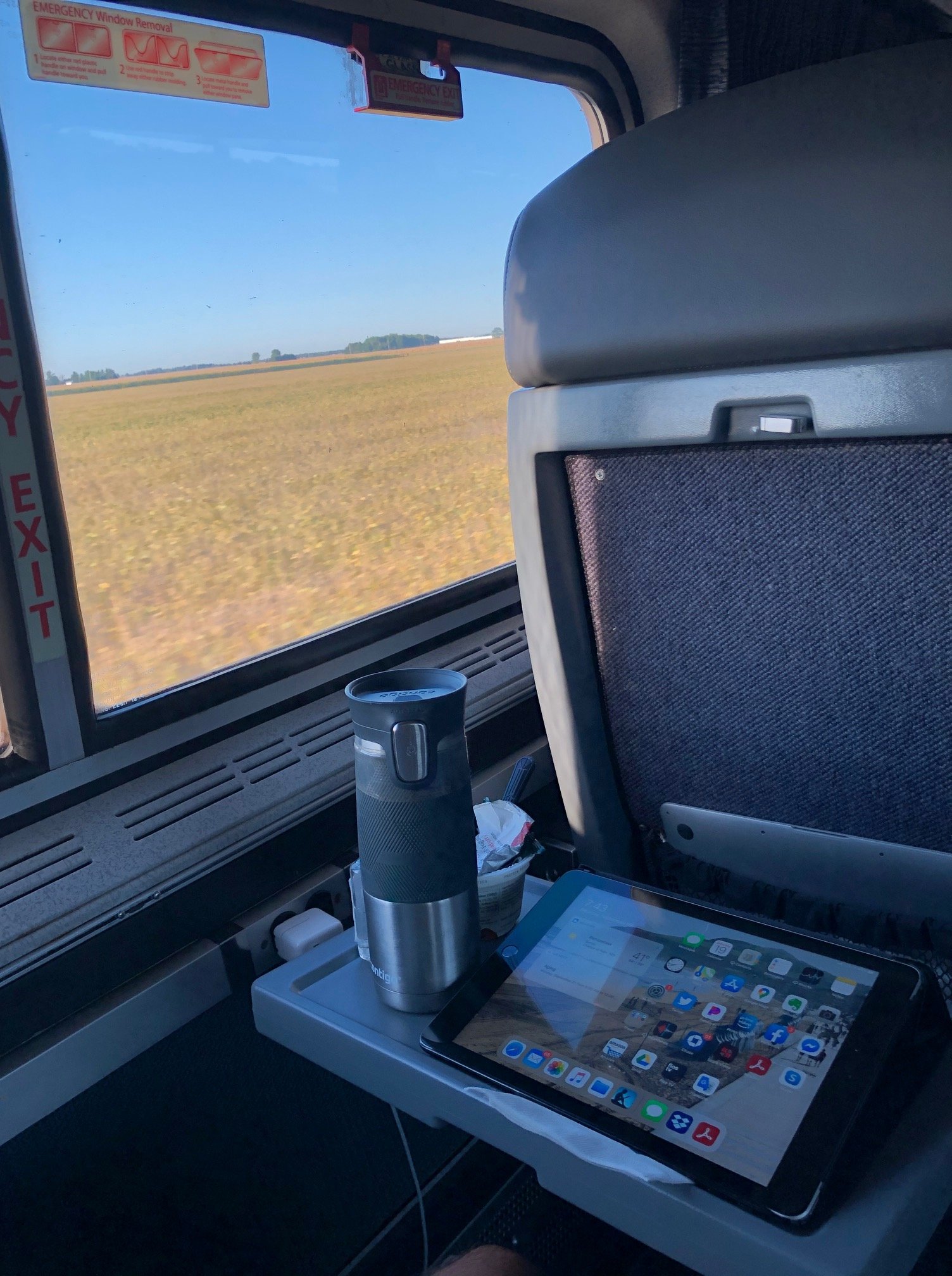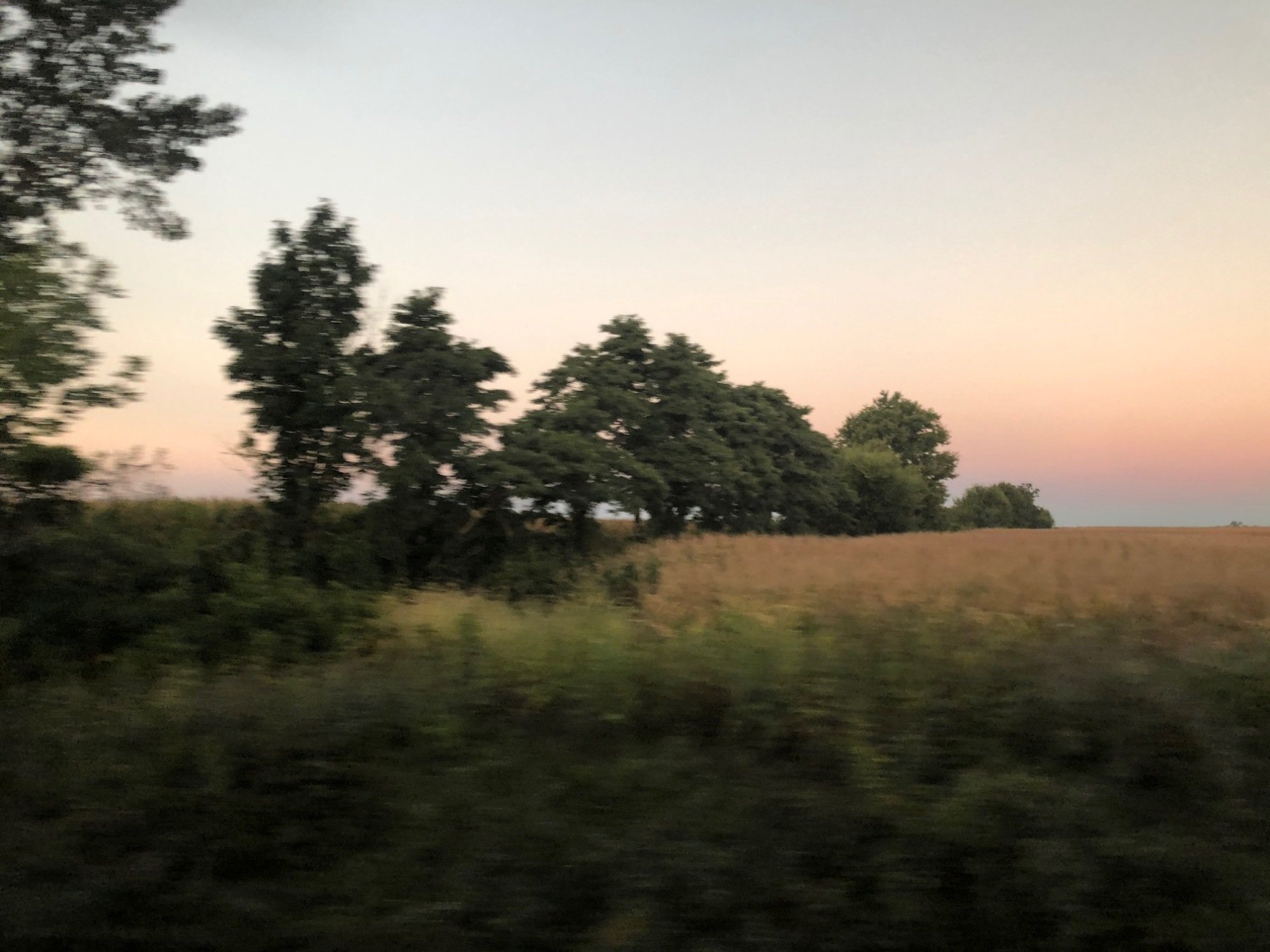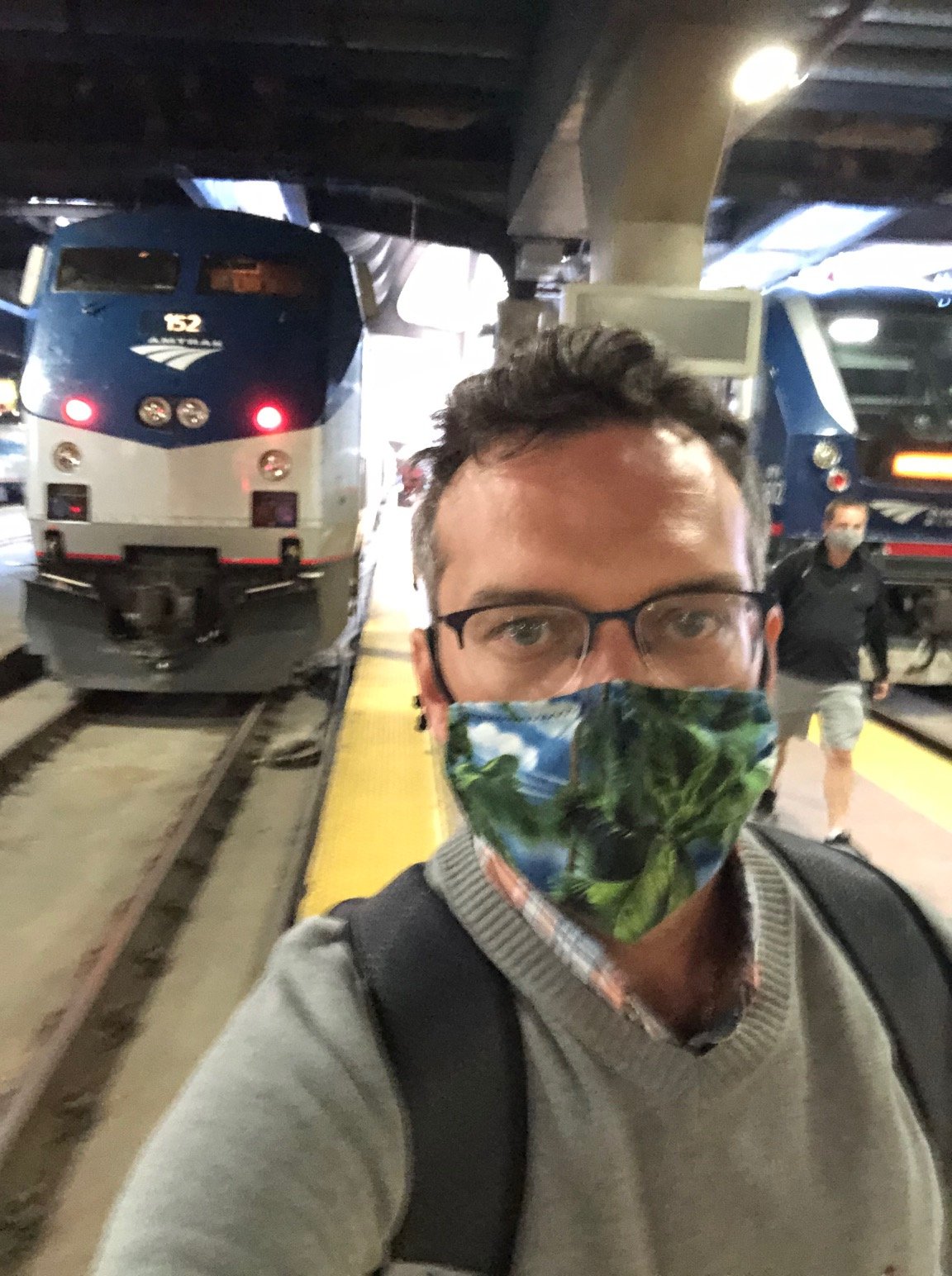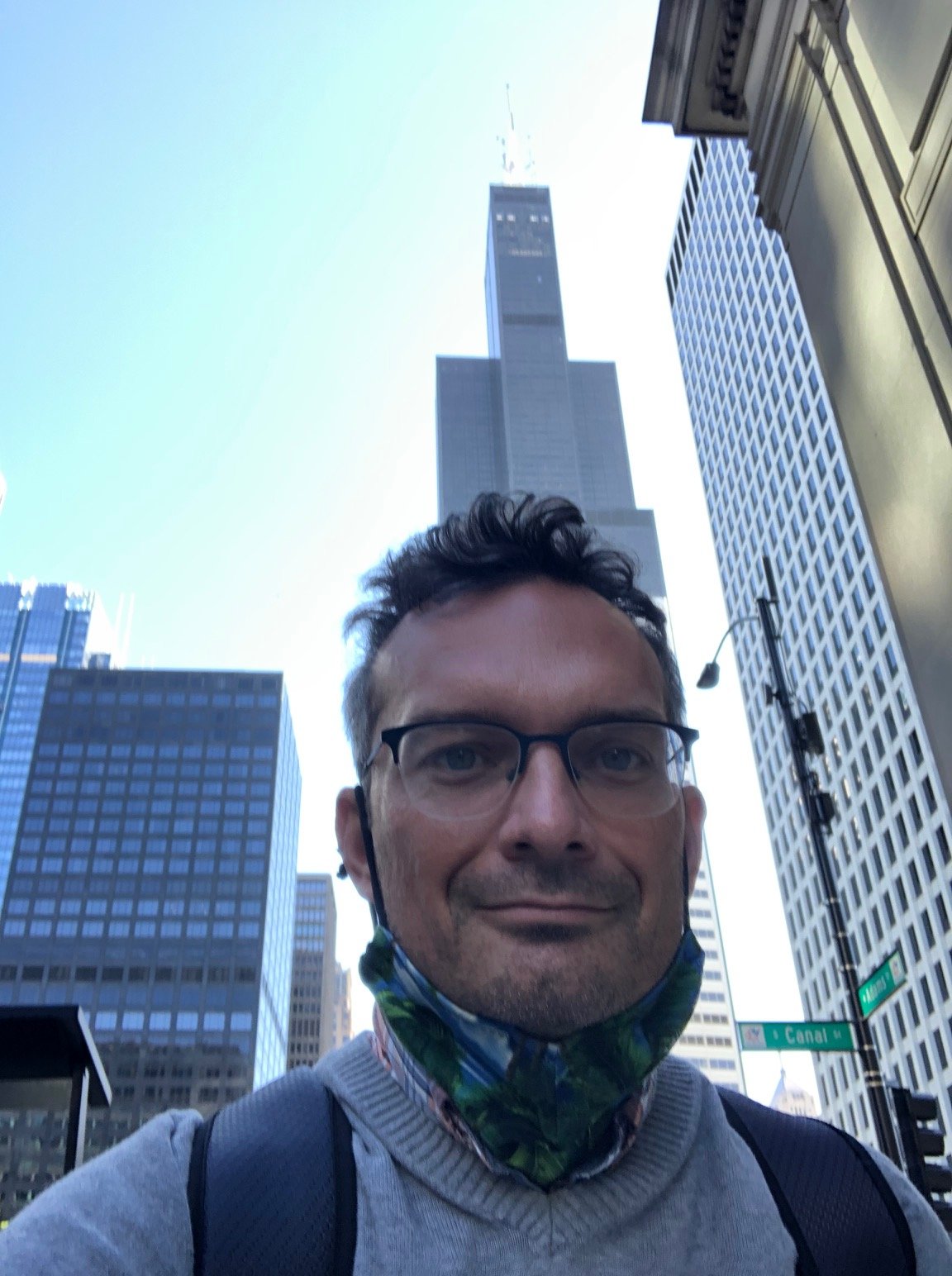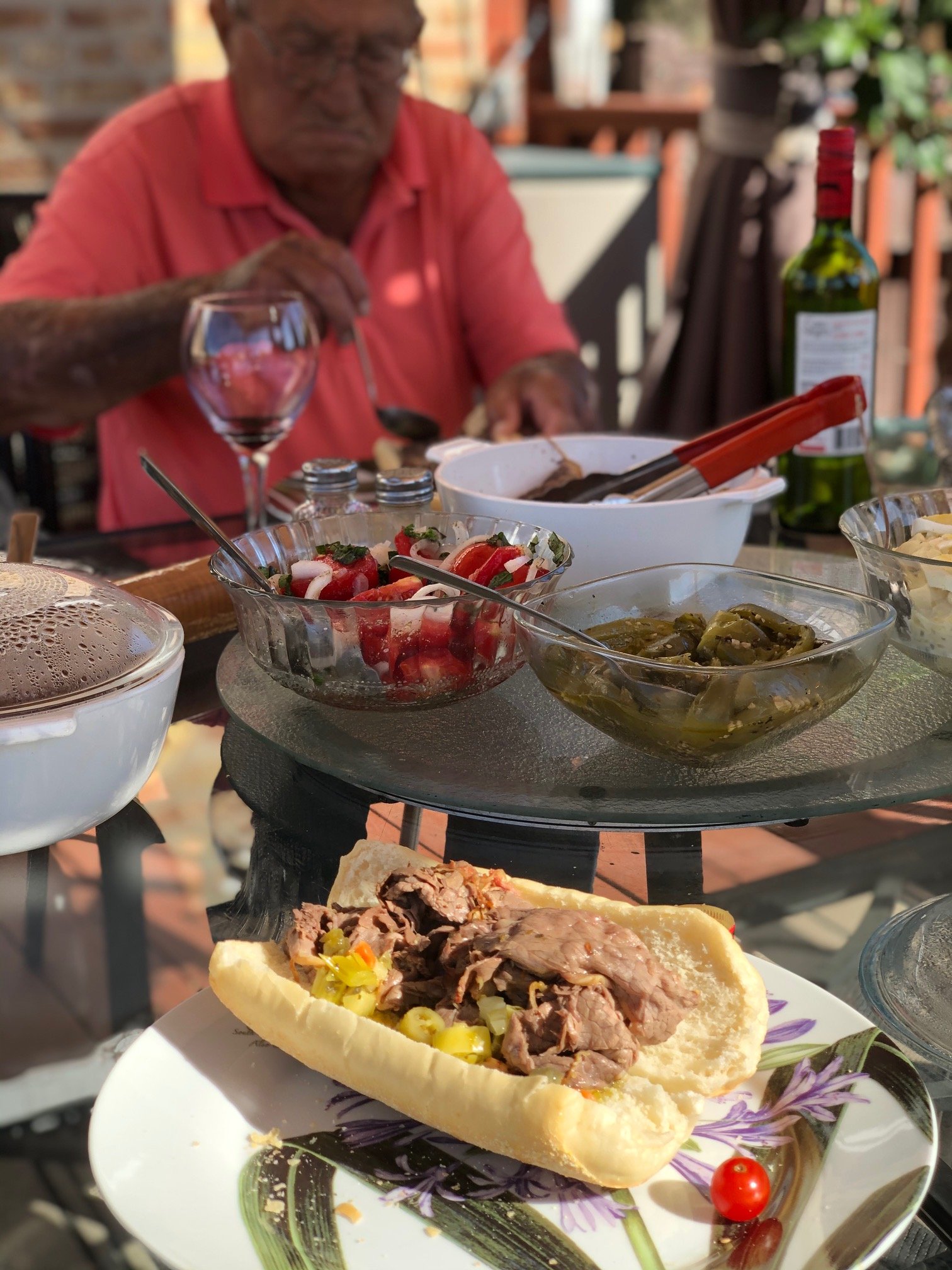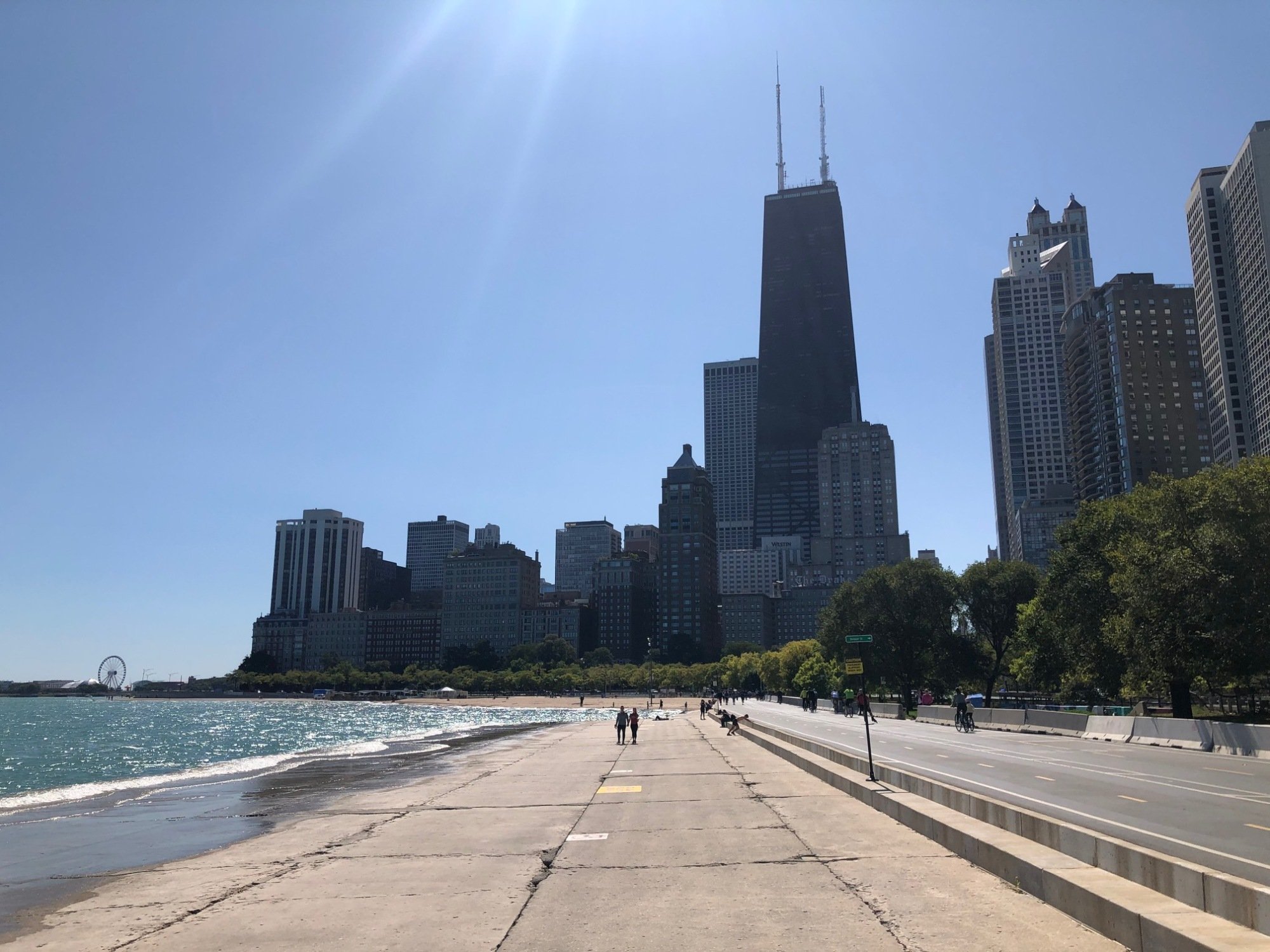The Cardinal: Newark to Chicago During the 2020 Pandemic
Twenty years ago this summer, I made my first long-distance train trip, on the Southwest Chief from Chicago to Los Angeles, connecting to Oceanside. I met a lot of characters, including a woman who was in the middle of a month-long rail trip across Canada and the United States. Four months later, on my winter break, I embarked on a similar trip — and six months later, after graduating college, I did it again.
On that winter trip, I made a split-second decision to take the Southwest Chief, again, rather than the California Zephyr, which goes through the Rocky Mountains. I was afraid of delays and missing some pre-Christmas festivities, and I immediately regretted the decision.
I have done some East Coast and Midwest trips since then, but had never taken the time to ride the Zephyr, and several days of vacation time accumulated during the Coronavirus pandemic gave me the time I needed to finally make the journey.
I spent weeks considering whether it was safe and responsible to make this trip. When my mom broke her hip on Sept. 11 — a very minor break, thankfully — I decided it was time to visit my family, and train travel seemed just as safe as air travel.
In retrospect, late September was the best time in 2020 to take a trip. New cases were at a low point. Amtrak required masks at all times, except while eating or drinking, and all trains were capped at 50 percent capacity to ensure social distancing. I would be guaranteed an empty seat next to me.
I booked my ticket just days before departure, setting out for a cross-country train trip on September 18, 2020.
Part One of this Pandemic Journey: The Cardinal from Newark to Chicago
Nearly 800 miles separate New York City from Chicago, roughly the same distance between Beijing and Shanghai, which are connected by a 4.5-hour train ride with departures every hour. Imagine stepping out of a Midtown office at 5 pm and arriving in the Chicago Loop in time for a nightcap, without standing in a TSA line or at a baggage carousel.
Alas, in 21st Century United States, the rail journey takes at least 19 hours aboard the Lake Shore Limited (it was actually quicker in the 20th Century!). Having completed that journey three times, I opted for the 27.5-hour route aboard the Cardinal, so named because every state it passes through between D.C. and Illinois has the cardinal as its state bird.
The route goes down the Northeast Corridor to Washington, DC, and then westward through Charlottesville, Charleston, Cincinnati and Indianapolis, over 1,146 miles of track. In a year that put the entire nation on pause, time was, for once, on my side.
***
I boarded the Cardinal at Newark Penn Station on a Friday morning with a mix of pandemic trepidation and the usual excitement of a train trip. This was a workday for me, so as the train sped down the familiar Northeast corridor to Philadelphia, and onward through Wilmington and Baltimore to Washington, DC, I opened my laptop to get as much work done as possible before the scenery became more interesting.
At Washington’s Union Station, passengers are allowed to step off for about a half an hour. The station is full of grand Neoclassical arches and domes, designed by Daniel Burnham. On this day, however, it was deserted, with all shops closed due to the pandemic, except for a chain coffee shop where I grabbed a large Earl Grey tea. I took a short walk toward the U.S. Capitol building for some fresh summer air and to take some pictures.
Back on the Cardinal with my hot cup of tea, I found myself one row in front of an Amish woman who coughed incessantly. Neither she nor her traveling companions wore their masks over their noses. Finding the row in front of me empty, I moved forward to put more distance between us.
Outside of DC, as the train continued west from Alexandria, I was now on tracks I had never covered before. Large estates dominated the open landscape around Manassas, Culpepper and Charlottesville. Beyond Charlottesville and through much of western Virginia, the Cardinal tracks cut between hills densely covered with trees — a change from the usual tracks that run alongside roads or rivers.
I felt so remote from anything familiar, even though just hours before, I was in the middle of our nation’s capital.
Rickety and rocky, the train blew its whistle constantly as we passed rolling hills, cows, rivers and rolls of hay, with not a soul in sight. My ears popped as we climbed through tunnels.
At Clifton Forge, Virginia, we were so far ahead of schedule, we had an unexpected “fresh air stop.” With a population of roughly 3,500 people, this town in the Allegheny Highlands has had passenger rail service since 1857 and was once home to a maintenance facility for steam locomotives of the Chesapeake & Ohio Railroad. The presence of the railroad is still evident, with CSX locomotives on adjacent tracks, and a sign by the station proclaiming CSX’s commitment to safety, noting 1,259 days since the last injury. From the perspective of the station, this was a ghost town. No signs of life, with the majestic highlands rising around us. I was grateful for this unexpected opportunity to step off the train, as just a short walk around gave me a better sense of this corner of Virginia.
Soon we were in West Virginia, nearing the scenic highlight of the Cardinal route, the New River Gorge, the country’s longest and deepest river gorge.
I traced the route on Google Maps and found that I was in fact on the best side of the train, the left side. As we approached, my Covid fears resurfaced, as the woman across the aisle from me fanned herself incessantly and coughed, while chatting on her phone about Satan messing with her.
Turning back to my window, the New River Gorge was breathtaking, especially grand as we passed under the 3,000-foot-long bridge spanning the gorge. The sky was grey and darkening with dusk, making the massive river, the surrounding banks and the sky monochromatic. Reflections and trees kept me from capturing good photos.
Looking at the river as it changed from rapids to still water, I asked myself whether any other Amtrak route east of the Mississippi could compare to this. I need to take this route every year, I said to myself, in various seasons, especially early spring or late fall, when fewer leaves would block the view across the river. I would also do this eastbound instead of westbound for more daylight in the gorge.
Back inside, the Amish people two rows behind me still did not have their masks on properly, which irked me. Even though I had repositioned myself, they were still close enough that I could hear the woman humming hymns as she crocheted. But, I, too, was violating Amtrak rules by sipping my own alcohol: an Evil Twin brown ale from Brooklyn, an Evil Twin IPA with apricot, and an Einstock Icelandic Arctic pale ale.
Just after 7 pm, the skies and landscape were noticeably darker. We had crossed the river, giving those on the right side a view of the river and me, a view of sheer rock. Phone service faded in and out, and I listened to Jimmy Eat World, a band whose songs took me back nearly two decades, with each conjuring a different memory: “The Middle” took me back to an elliptical machine at 24 Fitness in San Marcos back when I lived with my parents there, “Sweetness” brought me back to cycling with a group in Tuscany in September 2003, and “Pain” reminded me of training for my first marathon in 2010.
Perhaps it was the alcohol. Perhaps it was a sixth sense that something significant had happened in the news. But I was uneasy with the loss of phone service. I thought back to a ride on the Lake Shore Limited in November 2017, when I played Cards Against Humanity with fellow passengers in their early 20s, and one of them, a member of the Armed Forces who didn’t want to talk about his work, said he had a house in rural New York with no cell service, and that nothing made him happier than being out their and watching Netflix knowing no one would bother him.
I know there is some mental benefit to being completely disconnected. Later on this trip, in the canyons of Colorado, I found myself totally at peace with no phone service, but that night in West Virginia, I uneasily refreshed my phone every 30 seconds. And when I finally had service, I was jolted from my music with news from the political world: Ruth Bader Ginsberg had died.
After a few minutes, I looked across the aisle and shared the news with the coughing woman. Her response — “yeah a lot of people died this year” — led me to believe she didn’t know the significance of the news.
***
As the train continued through West Virginia and into Kentucky, I lamented the absence of a dining car, where I would splurge on overpriced food for the experience. I instead ate the first of what would become many microwave cheese pizzas on this trip. I stepped off to stretch in Huntington, West Virginia, and then did my best to sleep.
I awoke in the farmland of Indiana, approaching Chicago from the south, via a morning fresh-air stop in Indianapolis.
We rolled into Chicago right on time, a welcome rarity for Amtrak, one that I was grateful for. I hopped on a Divvy bike and rode from Union Station along the Chicago River to my Marriott off Michigan Avenue, juggling a small bag while chatting with my mom about my trip.
My quick overnight stay would include an afternoon visit to my great aunt and uncle’s house in Franklin Park with beef sandwiches, hot giardiniera peppers and red wine — always my first meal upon arriving in Chicago.
The following morning, I rented another bike and took it north along the lakefront to meet my aunt for a walk and an outdoor breakfast. Biking back south toward Union Station, I marveled at the skyline and the deep blue lake, as I always do, asking myself if there was any better place to be at that mid-September moment.
Just a few hours later, I would board the California Zephyr for the next leg of my journey.

